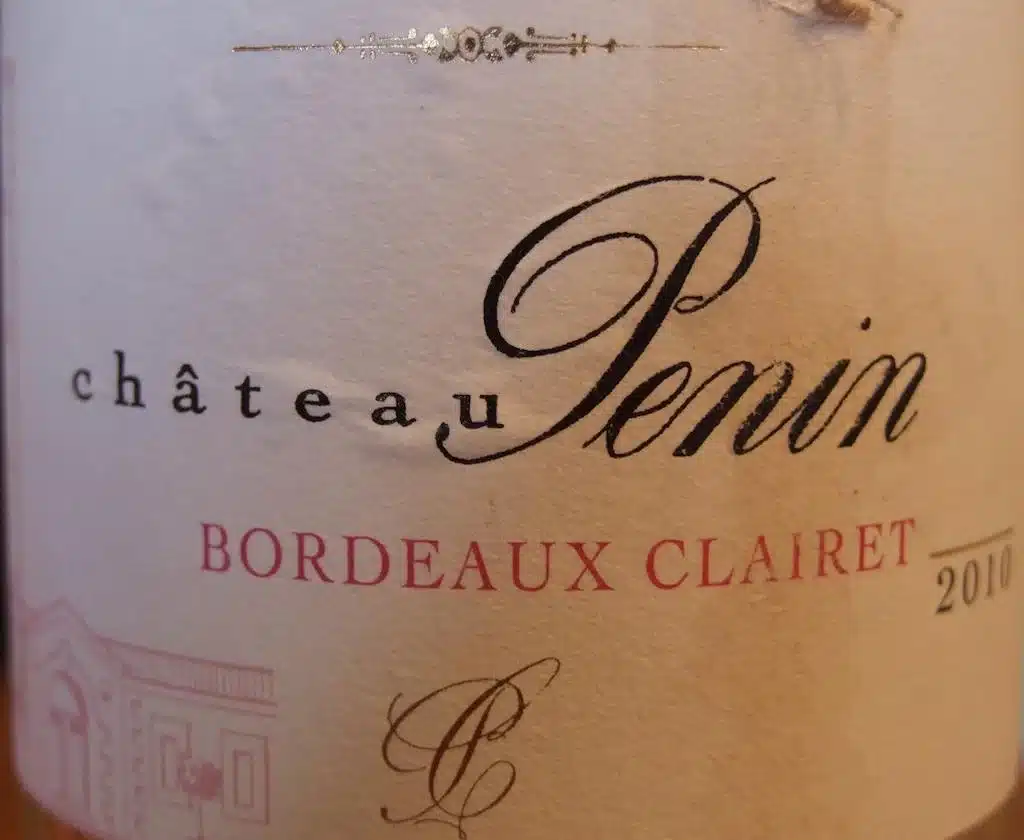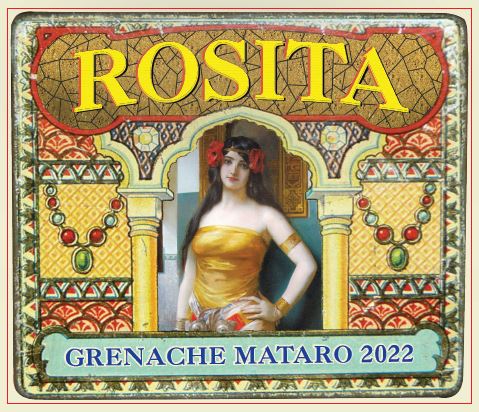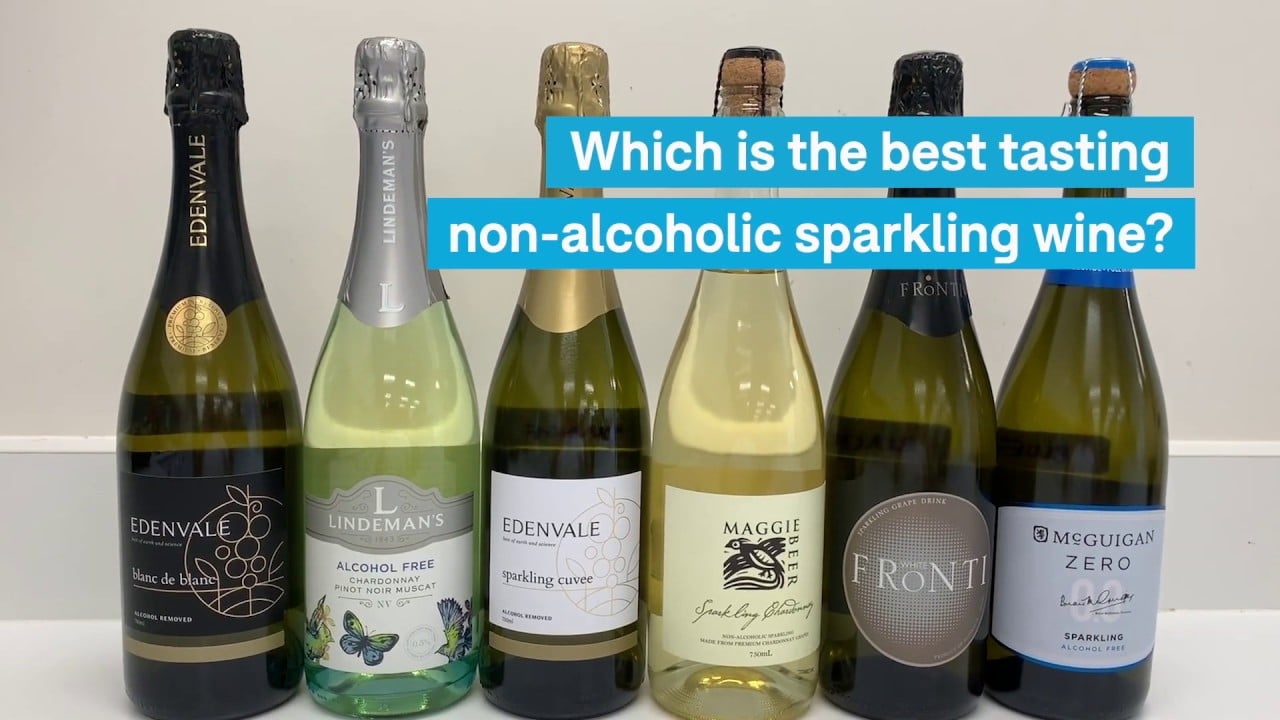News and views about wine in the Glug Wine Diary makes our site more than a retailer showing pictures of bottles with price tags. We believe that information other than just tasting notes can help make wine drinking more enjoyable.
Some wisdom from Hugh Johnson – 10 August 2025
As part of a celebration of the 50th anniversary of its publication, the famous wine magazine Decanter has published some words of wisdom from wine books author Hugh Johnson. Some examples:
. I don’t like tastings that try to elect a ‘winner’. Among wine lovers the goal should be simply appreciation, sharing the qualities we enjoy in each wine… and even glossing over the shortcomings. … In tasting rooms these days I put the bottles on the bench in a straight line, then either bring them forward or push them back as I taste them. It forms a clear picture of preferences, which everyone can then discuss. One German magazine, I remember, when the tasting was done, measured the remaining contents of the bottles with a tape measure. The emptiest won. What’s wrong with hedonism?
. I get surprises. I get shocks. But I also learn that certain wines remain stubbornly cheaper than my estimate of their real worth. ‘Real’ is measured in the pleasure and satisfaction they give me.
Isn’t it true that some names will always fetch a substantial premium because they are capable, at their best, of reaching the sublime heights? Or at least a level of recognisable distinction that, as it were, gets them nodded through. OK for banquets, let’s say. Labels, of course, play the key role. I love the story of the prosperous fellow giving a party who opens bottle after bottle of Krug. ‘You idiot,’ his friend says. ‘You don’t honestly think they know the difference?’ ‘No,’ says the host, ‘but they can all read.’
A bonus plug for the Hunters Tyrell’s – 5 August 2025
Call it the luck of the Tyrells with their Hunter Valley wines. The English test team will give them a free plug during the forthcoming Ashes series. The Poms, you see, have begun produdy wearing the Tyrell’s name on their shirts.
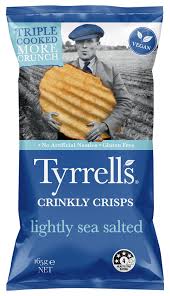
Picking up the sponsorship bill is an English potato chip manufacturer. A perfect opportunity for our family owned winemaker to get in on the grouter when the tests begin in November.
Clearly good things come to those who make fine semillons
Meghan Markle Joins the 5 August 2025
Meghan Markle’s entry to the wine trade with a 2023 Napa Valley Rose has begun with a quick sellout. As a guide to the royal taste we offer this review from the Murdoch owned New York Post:
Landing and Yellowglen Mad About the Jones Girl – The Times 4 February 2025
The release of the fourth Bridget Jones movie has been credited with causing a spike in sales of food and drink featured in the series … Waitrose said that shoppers are also being inspired by Jones’s notorious penchant for Chardonnay, with sales of the citrusy white also rising in recent weeks.
Oxford Landing Chardonnay was the biggest beneficiary with sales up 21 per cent but Yellow Tail Chardonnay and Dark Horse Chardonnay have also had an uplift of 13 per cent and 10 per cent respectively.
Wine Australia should go jam its jammy … – Wine Australia website 15 January 2025
Evidence of how the cool climate propagandists have taken over the Australian wine industry is clear to see on the Wine Australia website. Consider this nonsense in a section on Shiraz:
To ripen fully Shiraz needs a warm growing season, however, the most aromatic, elegant styles are grown in regions with cool nights and high diurnal temperature ranges – such as the Canberra District, Adelaide Hills, Mornington Peninsula and the Yarra Valley. In warm to hot regions, Shiraz shows greater jammy, blackberry and plum fruit characters and less of the delicate aromas that are the hallmark of the premium styles.
Just what is this “jammy” word meant to mean? That the great Barossa wines of Penfolds and Henschke are somehow sweet and lack elegance?
Meaningless and biased tasting descriptions have no place on the official industry website. They should be jammed in the waste paper bin forthwith.
Drink a glass of red wine every day – from Giles Coren The Times 28 December 2024
It is a wonder that there are not more scientific investigations into whether drinking a glass of red wine a day is good for you or bad for you, on account of the antioxidants killing all the free radicals — or vice-versa, I’m never sure. Honestly, sometimes two or three days can go by without a front-page headline that says, “Drinking a glass of red wine is good/bad for you.”
Champagne’s sordid secret – from The Guardian 23 December 2024
Champagne’s sordid secret: the homeless and hungry migrants picking grapes for France’s luxury winemakers –
A Guardian investigation has found workers in France’s champagne industry are being underpaid and forced to sleep on the streets and steal food to stave off hunger.
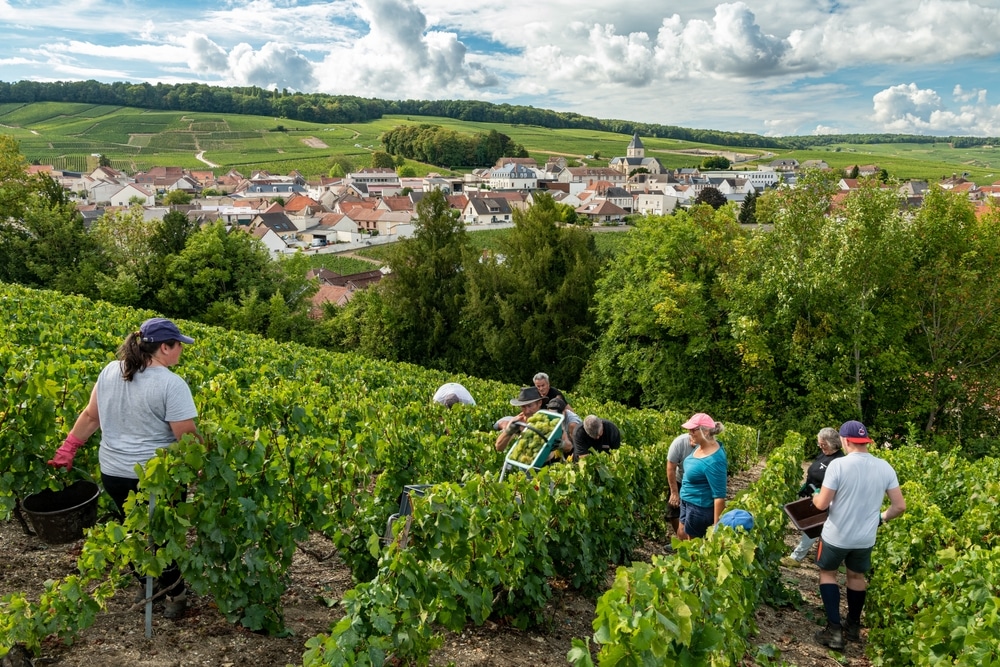
Workers from west Africa and eastern Europe in the town of Épernay, home to the headquarters of some of the world’s most expensive champagne brands, including Moët & Chandon and Mercier, claim that they are either not being paid for their work or illegally underpaid by vineyards near the town.
The Guardian found workers in the town sleeping on the streets or in tents as the vineyards did not provide accommodation. Other workers staying in a nearby village said they had been forced to steal food from local people as they did not have anywhere to buy provisions.
Caution about wine sales to China – from Vino Wine News 2 December 2024
“Driven by the ‘compulsive entrepreneurialism’ I mentioned earlier, the market was flooded with outsiders seeking easy profits,” {Dan}Siebers {a major Chinese import} explains. “The Bordeaux en primeur boom of the early 2010s and the broader wine import surge, which peaked in 2017, were driven more by speculation than genuine demand. People imported wine not because they had buyers lined up or a distribution strategy, but because they hoped to flip it for a quick profit. It was reminiscent of the Bitcoin frenzy—fueled by hype and speculation rather than real value.”
This speculative bubble eventually bursted. As the market corrected, many speculative players exited, leaving behind a surplus of unsold wine. To exacerbate the issue, much of the imported wine was of low quality, further alienating consumers and hindering repeat purchases.
“The decline in China’s wine imports wasn’t due to people suddenly stopping drinking,” Siebers clarifies. “It was because much of what was imported wasn’t being consumed, and much of it wasn’t worth consuming in the first place. Compulsive entrepreneurs were flooding the market with cheap, low-quality wine, damaging the entire industry.”
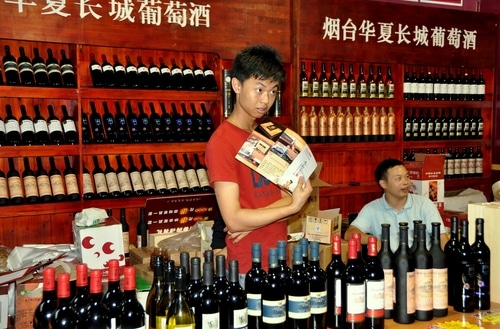
A recent resurgence of this trend can be seen with the return of Australian wines to the Chinese market. After a period of about 4 years, the news of their return triggered a new wave of speculative imports.
“The recent influx of Australian imports is largely disconnected from real consumption or demand,” Siebers observes. “It’s primarily driven by compulsive entrepreneurs chasing the next trend.”
See also Rebuilding wine sales in China won’t be easy
What’s an old vine and an old vineyard? 29 November 2024
The International Organisation of Vine & Wine (OIV), wine’s official industry body, has moved to bring some uniformity to the use of the terms “old vine” and “old vineyard”. At its recent annual conference the OIV determined that “a common definition of old grapevines and old vineyards is essential, to promote the adequate study, protection and valorisation of these vineyards.”
It adopted the following definitions of OLD GRAPEVINE and OLD VINEYARD
An OLD VINEYARD is a block of vineyard terrain, continuous and legally delimited, where at least 85% of the grapevines respond to the previous definition, and which produces vitivinicultural products (wine, grapes for fresh consumption, dried grapes, distillates and unfermented products from grapevine) eligible for legal certification by a competent authority. Its genetic, economic, sociocultural, and historical factors lend recognizable characteristics to its grapes and respective wines.
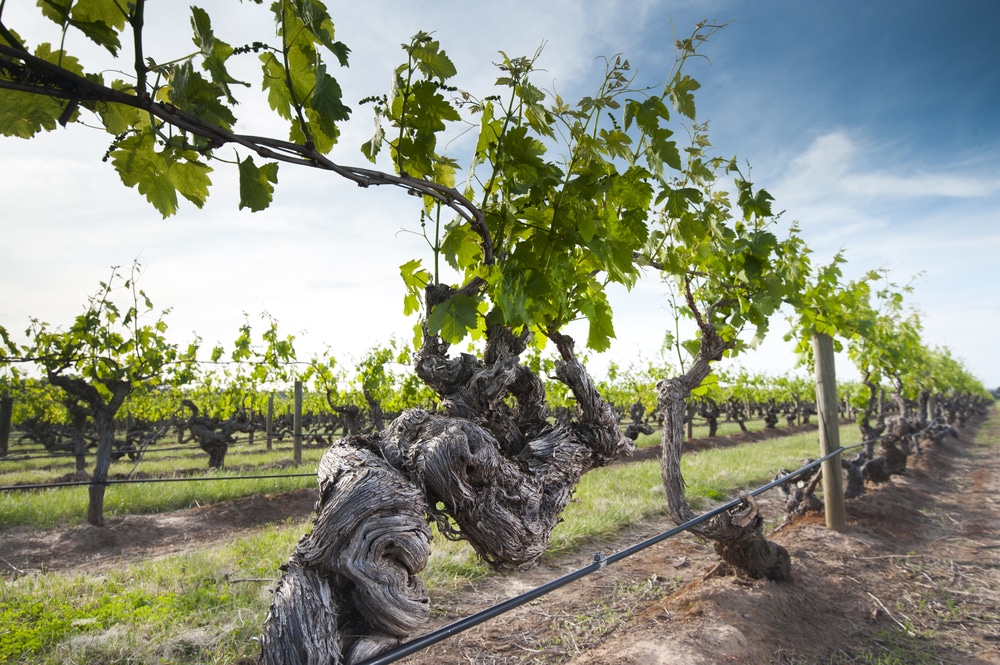
An OLD GRAPEVINE is a single plant officially documented to be 35 years or older regardless of any other factors. It is the result of a physiological/environmental process that occurred over the time, either naturally or purposefully managed (human factors) enabling it to survive in a given place. In the case of grafted plants, the graft connection between rootstock and scion should have been undisturbed for, at least 35 years. For purposes other than the production of vitivinicultural products, a higher limit may be set.
Tolstoy on Wine 21 November by Richard Farmer
At age 82 I have finally reached Book 8 Chapter XIV of Tolstoy’s War and Peace. It was with mixed feelings that I came across this description of an elderly man and his drinking habit.
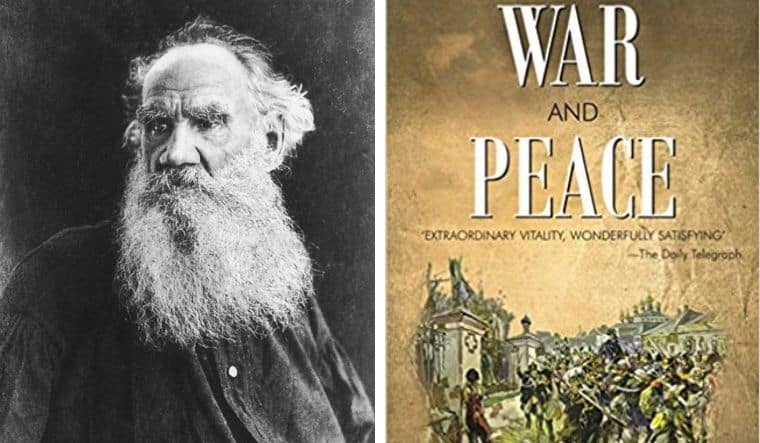
Drinking became more and more a physical and also a moral necessity. Though the doctors warned him that with his corpulence wine was dangerous for him, he drank a great deal. He was only quite at ease when having poured several glasses of wine mechanically into his large mouth he felt a pleasant warmth in his body, an amiability toward all his fellows, and a readiness to respond superficially to every idea without probing it deeply. Only after emptying a bottle or two did he feel dimly that the terribly tangled skein of life which previously had terrified him was not as dreadful as he had thought. He was always conscious of some aspect of that skein, as with a buzzing in his head after dinner or supper he chatted or listened to conversation or read. But under the influence of wine he said to himself: “It doesn’t matter. I’ll get it unraveled. I have a solution ready, but have no time now—I’ll think it all out later on!” But the later on never came.
Good Sense from a Master of Wine 9 November 2024 Belfast Telegraph
Master of Wine Richard Bampfield: “As a Master of Wine I get to taste the top wines in the world, but my work with Lidl keeps me grounded, and I really like that. I can appreciate the posh wines that much morebecause I know what most of the other wines on the market taste like. And so much of it tastes pretty good. The difference between the most expensive wines and the cheaper wines quality-wise is much closer than most people think.”
Is Sparkling Sake the new Prosecco? 27 October 2024
Fashionable drinks boom and fashionable drinks fade. All the signs are that prosecco is on the way down as the favourite tipple. The new drink on the block is Sparkling sake.
The Japanese rice wine with bubbles is now quie the thing in swinging London. The growing popularity in that city of sushi restaurants is largely responsible. The London Times reported recently that from cocktails to dinner parties, the Japanese drink is becoming increasingly popular. Columnist Anne Shooter said one reason for the drink’s recent success is probably the huge global marketing campaign launched by the brand Mio. But at 5 per cent ABV it has huge appeal for younger, more health and price-conscious drinkers.
Dolly Parton’s wine – An Appalachian Controlée? 1 August 2024 Gobal Drinks Intel
Country-and-western star Dolly Parton will launch her first wine range, Dolly Wines, in the UK in collaboration with Accolade Wines in September.

The Dolly Wines line comprises a French rosé and a prosecco …
The full Dolly Wines collection will also feature a chardonnay for the US market and a sparkling wine for Australia.
“Dolly herself was involved in creating this … down-to-earth range of wines, and we think they capture her captivating sense of fun and sparkle perfectly,” said Accolade Wines’ Europe marketing director, Tom Smith. “We’re confident the latest addition to the Accolade Wines portfolio will help drive category growth among two already popular categories– prosecco has the highest penetration in sparkling wine amongst wine shoppers, while the French rosé category is growing at 8.4%.”
First choose your wine and the chef chooses the food – 24 July 2024 The Times
Penty of wine lovers peruse the wine list before the menu when dining out, but L’Écrin at Hôtel de Crillon in Paris may be the only place where that is obligatory. [Xavier] Thuizat, who has just won the 2024 Michelin Sommelier award, keeps reappearing at the table with beautiful wines. “The kitchen don’t know what they are making until I call and say, ‘This is what the guests are drinking,’ ” he says. “Everything starts with the flavours, acidity, tannin and alcohol in the wine. From that we create the menu.”
350,000 bottles in the cellar – 19 July 2024 Rachel Speed in The Times
To celebrate its 150-year history, the Hôtel de Paris Monte-Carlo is granting guests access to its extraordinary wine collection for the first time. As I’m guided around the formerly very private wine cellar by Elvina Rossow, a Burgundy expert and one of the 14 sommeliers working under the chef sommelier Patrice Frank, the scale of this extraordinary collection becomes apparent.
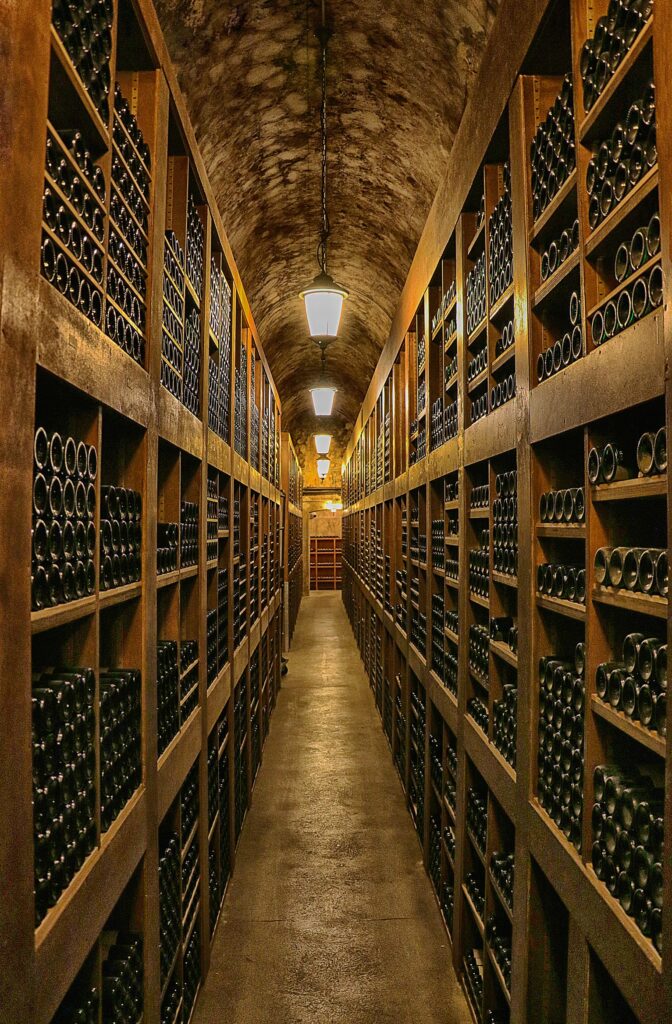
Opened in 1874, the cellars hold more than 350,000 bottles of wine of approximately 6,000 varieties, making it the largest hotel and restaurant cellar in the world.
How death of the dinosaurs led to birth of wine – 2 July 2024 The Times
“At the end of the Cretaceous period about 66 million years ago, an asteroid the size of a city ploughed into the Earth. A new study suggests this turned out to be a double blessing for our species. Not only did it wipe out the dinosaurs, allowing our ancient mammalian ancestors to thrive — it also gave us wine. The research describes the oldest fossilised grape pips to be found in the Americas.

They date from about 60 million years ago and, according to the scientists who found them, they bolster the theory that grape vines were able to take root around the world only after the large dinosaurs had perished.”
BHP the grape grower – 29 April 2024 The Australian Financial Review
“If BHP is successful in acquiring Anglo, the Vergelegen vineyards might – on face value – seem an unlikely addition to BHP’s portfolio of gritty mining assets.
Founded by a former boundary rider on a sheep farm in the Broken Hill district – German migrant Charles Rasp – BHP’s origins are distinctly more working class than Anglo’s.
But unbeknown to most Australians, BHP is a player in wine too. The miner owns the Ogilvie View vineyard in the NSW Hunter Valley, upon which about 45 hectares of vines are grown.
Unlike Vergelegen, which welcomes close to 80,000 tourists a year for picnics, restaurant lunches and heritage tours, Ogilvie View was not even open to cellar door visits when contacted by The Australian Financial Review last year.
Ogilvie’s grapes are sold to the Scarborough Wine Company, where their “creamy, buttery” flavours are distilled into bottles of Yellow Label Chardonnay. Yellow Label can be picked up from Dan Murphy’s for just $33 a bottle, making it almost five times cheaper than a bottle of 2018 Vergelegen V.
But if the BHP board is willing to splash close to $60 billion on Vergelegen’s owner, they will be forgiven if they celebrate with a glass of the South African winery’s best.”
A reviewer admitting he’s human – 2 May 2024 The Times
I enjoy The Times columnist Giles Coren’s writing so much I even read his reviews of British restaurants there’s no chance I’ll ever be able to visit. After his offering today I admire even more for admitting how his reviews can be influenced by things quite out of the control of the subject he’s writing about.

Mr Coren writes how some weeks ago, he reviewed a pretty good restaurant in Oxford that let itself down in a few basic ways, “and although I was broadly positive about it, I did not let it off scot-free in the areas where it had failed, as I usually do when visiting independent restaurants outside London.” ..
A Shakespeare birthday quote – 23 April 2024
A wine quotation seems an appropriate way to remember the supposed birth date of the great man.
Good company, good wine, good welcome, can make good people. Henry VIII, act 1, sc.4, l.6-7.
The two years you lost – The Times, 10 April
Raising a glass – Ben Elton is unmoved by anti-drinking campaigns. Noting one that said even moderate drinking will knock two years off your life, the writer says: “They don’t tell you which two years. It’s the last two, the rubbish two, the two you spend not recognising your kids and having to be taken to the toilet.” As far as Elton is concerned, he’s happy to sacrifice those years for some good claret. Maybe it should be prescribed?
At least they left the label alone – 24 February 2024
There’s one thing marketing managers know it’s that if you don’t keep changing designs then the higher-ups might wonder why they keep paying you. Perhaps that’s the reason Penfolds came out with a new costume for Grange.
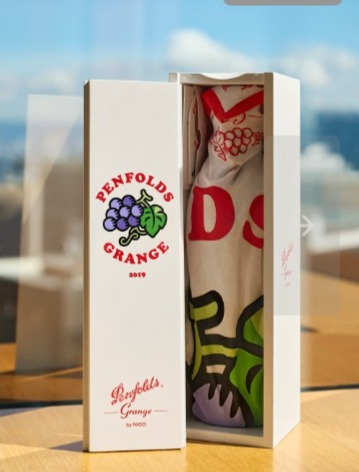
Each box is individually numbered and includes both a bandana and bottleneck tag designed by NIGO, as well as a certificate of authenticity. And for good measure real Grange lovers can buy a designed silk rug featuring a dyed purple grape design to reflect the limited-edition wine packaging. Each rug is handwoven over the course of two months by artisans in Nepal.
Your diarist’s only comment: at least they didn’t let NIGO loose on the actual wine label.
Touches of gold and mother-of-pearl – 17 February 2024
The French wine industry is long smitten with official rankings but Château Angélus has broken free of tradition with its touches of gold and mother-of-pearl. Saint Émilion vineyards, of which Château Angélus is one of the most prominent, historically have been jealous of the standing given to chateaux on the left bank of the Gironde by the Bordeaux Wine Official Classification of 1855. It was not until 1955 that Saint Émilion was given its own rankings of Premier grand cru classé A, Premier grand cru classé B, and Grand cru classé and that simply led to a different kind of jealousy – who should be given which gong.
It took Château Angélus until 2012 to be elected to Premier grand cru classé A but that did not end the squabbling because of a system of classification reviews every 10 years. Angélus and two other top ranked chateaus decided to quit the system.
Left, as it were, to its own promotional devices Stéphanie de Boüard-Rivoal of Angélus turned to gold. His recently released 2022 vintage comes with no label in an engraved bottle instead. She said: ‘I wanted something with a touch of jewellery inspired by a beautiful mother-of-pearl bracelet offered to me by a very dear friend.’
James Halliday’s tasting note gobbledygook – 30 January 2024
From The Australian’s magazine comes this gem of a wine tasting note:
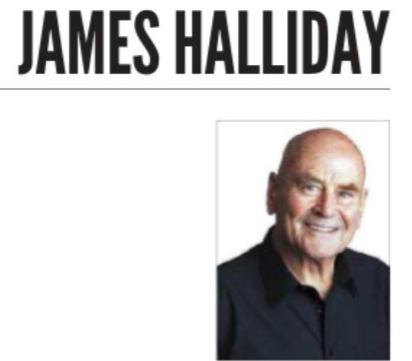
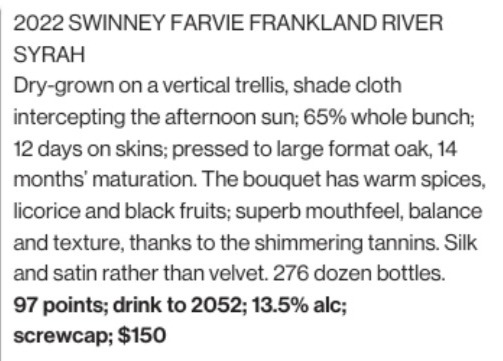
A wine with “shimmering tannins”? “Silk and satin rather than velvet”? What can this wine actually taste like? If you can explain it, to quote Rudyard Kipling: “By the livin’ Gawd that made you, You’re a better man than I am, Gunga Din!”
There’s a $50 Glug Wines voucher for the best description. Emails please to richard@glug.com.au
Missing a few bottles – 30 January 2024 From The Times
The Paris restaurant La Tour d’Argent recently did its first stocktake since 2020. It revealed 83 bottles missing from the cellar collection of about 300,000. “Ruling out speculation that the disappearance may be nothing more sinister than a bookkeeping dysfunction”, The Times reported,”La Tour d’Argent has filed a criminal lawsuit claiming to have fallen victim to theft. Parisian detectives have been put on the case.”
Why restaurants moved to those large glasses? 19 January 2024
Another definition of sociology to go with the famous finding that “taller men wear longer trousers.” Researchers from the UK’s Cambridge University have determined that people consume more alcohol when they use large wine glasses rather than small ones.
The Cambridge team carried out an experiment at 21 pubs and bars in England, asking them to sell only small and medium servings of wine for four weeks. It resulted in an 7.6 per cent drop in the overall amount of wine consumed. They called this a “promising intervention for decreasing alcohol consumption” that merits consideration as part of alcohol licensing regulations.
Larger 370 ml wine glasses in restaurants increased the volume of wine sold, and therefore consumed, compared to 300 ml glasses by approximately 7% In homes, smaller 290 ml wine glasses reduced the amount of wine drunk by around 6·5% compared with 350 ml glasses.
The study noted that the size of wine glasses has increased in recent years, almost doubling in the last thirty years. This likely contributing to an increase in wine consumption. “Regulating serving sizes in licensed premises could help shift social norms for what constitutes an appropriate serving size, both for consumption out of the home, such as in pubs and bars, and for consumption at homes where most drinking occurs.”
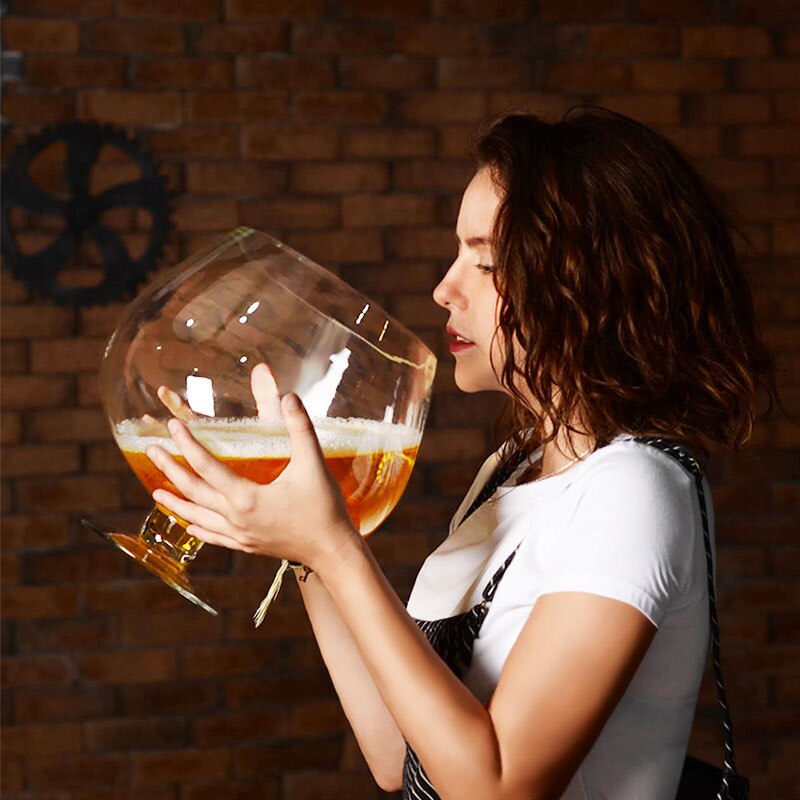
For a little history on this subject see the Glug report on The Growing Size of Wine Glasses
Reviewing the official cellars The Times Diary 17 January 2024
The advice of the tasting committee on the official cellar of the UK government ranges from “no hurry” on a 1955 Latour to “use with caution” on a 1961 Corton or the rather pessimistic “keep and hope” on a 1988 Margaux. Ports include an exceptional 1931 Quinta do Noval (“very special occasions only”) and a 1983 Dow (“use without anxiety”), while the advice on the 1878 cognac is “drink very sparingly”.
The Times’ diarist concludes: “Just as well Boris’s team took their booze suitcase to the Co-op rather than seeing what was on the shelves below Lancaster House.”
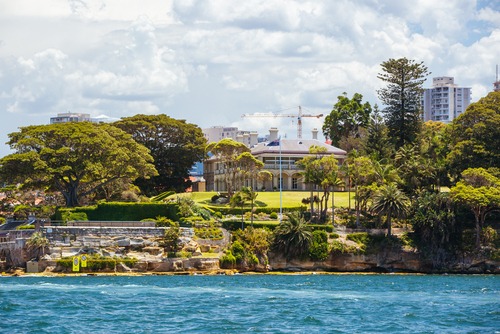
The item reminded me of the occasion when my brother David joined his friend Edgar Riek lunching on the balcony at Admiralty House one glorious Sydney summer’s day to review the Australian Governor General’s cellar. David maintains the pair did not realise that the Château d’Yquem they opened to quality test was the last bottle in the collection.
Cheaper wine in Thailand Vino Joy News 9 January 2024

Buying wines in Thailand is going to get much cheaper, as the country is set to introudce a sweeping tax reform including completely removing import tariffs in an effort to boost the country’s tourism. … According to the government spokesperson, import tariffs on wines, which currently stands at 54% and 60% of declared value, will be abolished indefinitely. Additionally, the excise tax on wine will also be lowered from 10% to 5% of its price. …
A perfect wife or a smaller bottle? 2 January 2024
Britain will soon have an answer to one of life’s difficult choices. Pint bottles of wine (568ml – the metric measure of an imperial pint) are about to be legal again.
Sir Claude Aurelius Elliott would be pleased. The former Cambridge don and Eton School headmaster once said the perfect wife enjoyed a glass of claret with dinner. He explained: “A half-bottle does not contain enough for a man, but a bottle is too much.”
Memories of a Long Ago Tasting – Richard Farmer 3 January 2024
[A diary item originally appearing on 10 April 2023 elevated because of the interest in our story Remembering best selling wines of the past]
David Armstrong, my long ago editor at The Bulletin, after noticing my recent piece on Yellow Tail, tweeted me asking “Do you remember when we did the blind tasting of the 20 most popular wines? I think everyone balked at the fake champagne.” To my reply that his memory was better than mine David prompted me with: “A story for The Bulletin: to rank the wines people drank (top 20 by sales) rather than talked about. You organised Tony Bilson and Peter Lehmann as the official tasters. We got down to someone’s asti spumante. Peter took a sip, spat it out and said: What is this shit?!!!”
The National Library’s Trove (long may it continue to exist) at least provided me with this article by brother David back in 1984:
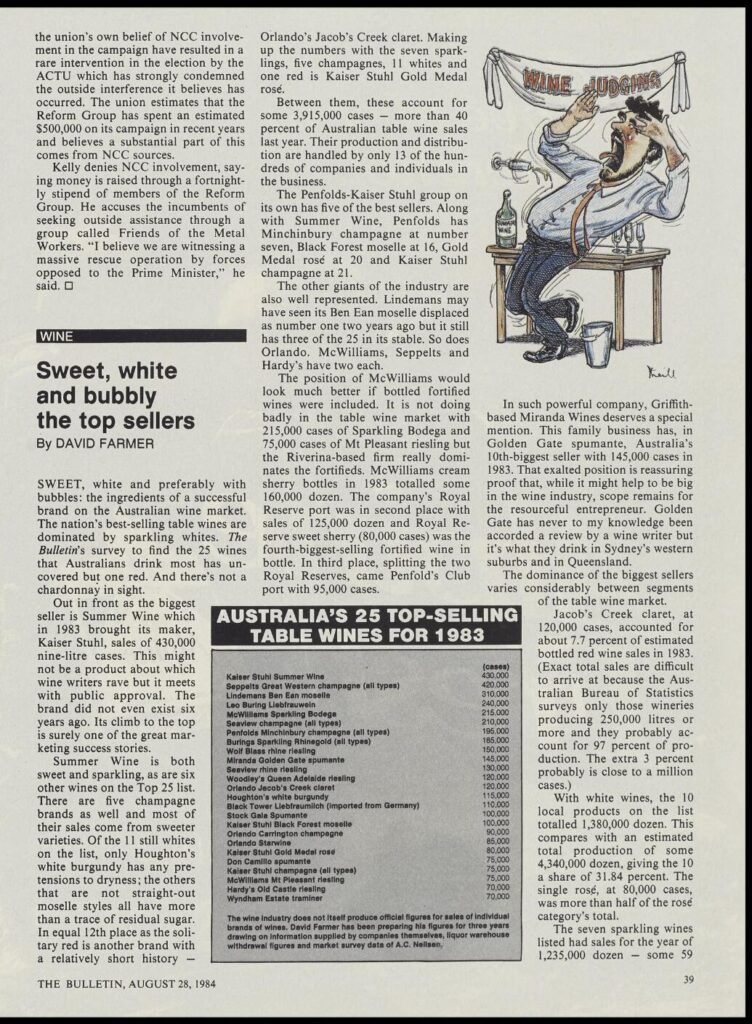
No mention of the tasting but at least proof that David and I have long had an understanding that the wine industry is far more than the fine wines that afficiandos rave about.
The French beer test – The Times 29 December 2023
Move aside wine. Beer is now the measure of a French politician’s popularity. Paris based Ifop Opinion asks voters to judge the country’s potential leader by answering the question who would you most like to have a beer with. The Times notes that the beer question, devised in the US as a barometer for election candidates’ likeability, is increasingly relevant in France. Research suggests that beer is gradually replacing wine in French hearts and glasses.
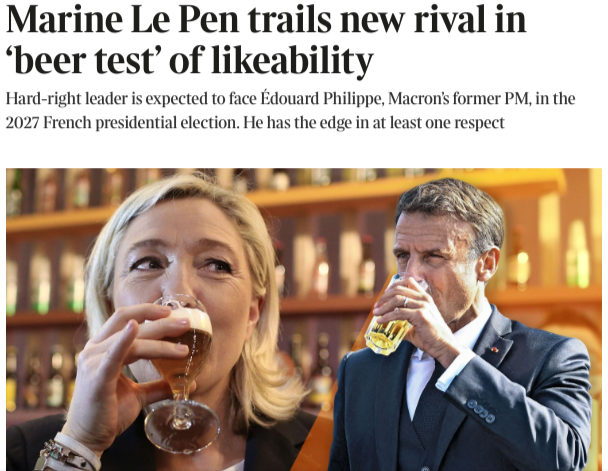
According to The Times: ‘Beer is a powerful social marker in France and many politicians use it to signal their closeness to working people. Gérald Darmanin, the interior minister, whose father ran a bar, often refers to his fondness for a “pinte” or a “demi”. He once complained of the absence of “people who drink beer and eat with their fingers” in Macron’s inner circle.’
Beware of the flying cork – From The British Medical Journal
The pressure in a 750 ml bottle of champagne or sparkling wine is about three times that of a standard car tyre, with the potential to launch a cork up to 13 m at speeds of up to 80 km/h. A cork can travel from bottle to eye in less than 0.05 seconds, making the blinking reflex ineffective. A cork hitting an eye can cause permanent blindness, retinal detachment, and lens dislocation, among other conditions. In May 2022 cyclist Biniam Girmay opened a bottle of prosecco on the winners’ podium to celebrate his win at the Giro d’Italia. The cork hit his eye causing an anterior chamber haemorrhage, and he had to withdraw from the next stage of the competition.
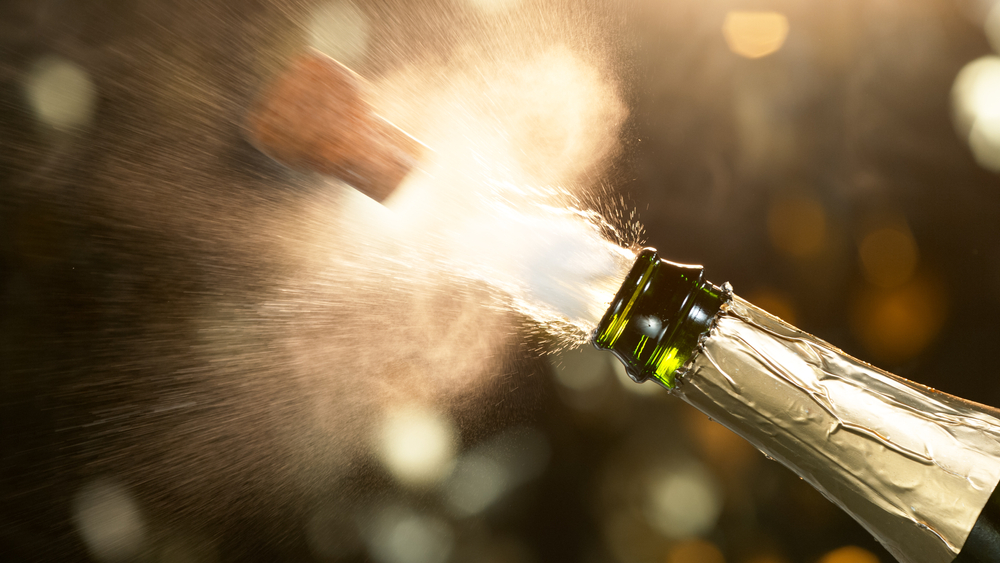
We offer some suggestions to mitigate ophthalmic risks during toasts, in line with guidance from the American Academy of Ophthalmology.
- 1 Chill the bottle before opening. Pressure reduces as the bottle cools, and as a result cork velocity decreases. Avoid shaking the bottle before opening for the same reason.
- 2 Face the bottle away from others and yourself at a 45° angle before opening.
- 3 Remove the wire cage (which could act as an additional projectile) carefully from top of the bottle while pressing down on the cork with the palm of a hand
- 4 Place a towel over the top of the bottle and hold the cork firmly
- 5 Gently twist the bottle until the cork loosens
- 6 Counteract the upward moving force of the cork, by pressing down on it
A truth about wine writing – Eric Asimov in a Wine Industry Network interview
Q. What are the primary challenges and hurdles wine journalism faces today?
A. Frankly, the biggest challenge is that so few wine-writing jobs pay well, much less a living wage. The travel necessary to write about wine intelligently is expensive, as is the wine itself. As a result, too many wine writers are subsidized by the wine industry, which poses a major conflict of interest for serious journalists. I don’t have a ready solution for this.
Counterfeit Yellow Tail – W. Blake Gray, Wine Searcher 30 October 2023
Counterfeiters are staying technologically ahead, such as by buying digital printers that enable them to counterfeit anti-fraud seals.
And they’re not just making DRC and Pétrus. In 2021, counterfeit bottles of Yellow Tail were found on sale in grocery stores in Birmingham, England.
When it’s warm, cool it – Giles Coren, The Times 29 August 2023
Waitrose has reported that sales of red wine are through the roof this summer because the fashion for chilling red wine has made it more popular in warm weather, with experts lining up to confirm that drinking cold red wine is ever so fashionable and new. But it isn’t.
The notion of drinking red wine at “room temperature” dates from a time when that room was in a draughty old castle in Burgundy and no warmer than 16C or 17C, which was the maximum temperature your wine eventually rose to after coming up from the 11C or 12C of your cellar. But as central heating caught on and the average room heat went up to a steamy 21C or 22C, that started being the temperature people believed they should drink red wine at, when it is actually far too warm. Even the great reds taste cheap and lazy, almost mulled, at that temperature.
Alcohol in wine – David Farmer 3 July 2023
What is the significance of the alcohol percentage in wine. Consider this. At the Decanter Wine Awards 2023 they judged 18249 wines and the highest pointing reds, the best of the best, averaged 14.5% alcohol. Now I rekon I have written more words about wine than any other writer though most has been advertising copy.

For 47 years I have told customers that if you want a tasty wine at a reasonable price make sure the alcohol is at least 14.5%. Why? Because you must have ripe grapes, full of flavour and sugar to create rich, full-bodied wines. The point. You cannot create a full flavoured taste from grapes
Recognition for the classic style Australian red – Richard Farmer 8 Jun 2023
The blending of Shiraz and Cabernet over the years has become a classic Australian red wine style. How delightful that the British based Decanter magazine has recognised the greatness of the syle. At its latest awards competition the Jacob’s Creek, Johann Shiraz-Cabernet, Barossa Valley, South Australia, Australia, 2013 was made a Best in Show
When should I open it? Eric Asimov in The New York Times 23 May 2023
The New York Times wine writer was asked “what do you often hear from your readers?”
I get emails from people seeking advice, like, “I inherited this wine from my mother 30 years ago, when should I open it?” Those are very difficult questions to answer because one of the things I like to preach about wine is that nobody is omniscient — not even critics. There are random factors involved in wine, and when to open a bottle is one of them.
What’s a name worth? The Times 19 May 2023
“This week, the civil court in Bordeaux ordered Stéphane and Jérôme Coureau to pay €1.18 million to Petrus for harming its reputation with their cheap imitation. It included €500,000 in damages and €680,000 to cover the Coureau brothers’ profits from the venture.
The dispute began a decade ago when the brothers, who own vineyards in Blaye, which is much less prestigious than Pomerol, launched Petrus Lambertini Major Burdegalensis 1208. The label, which has two keys, spoke of history. Petrus Lambertini was the mayor of Bordeaux who refused to hand the keys to the city to the King of Castille in 1208.
Wasting a good Diet Coke – The Times 17 May 2023
Appearing on the latest episode of The Adam Buxton Podcast to promote his new novel, The Making of Another Major Motion Picture Masterpiece, Hanks revealed his favourite tipple, a cocktail he proudly invented called: Diet Cokagne — pronounced the class A way.
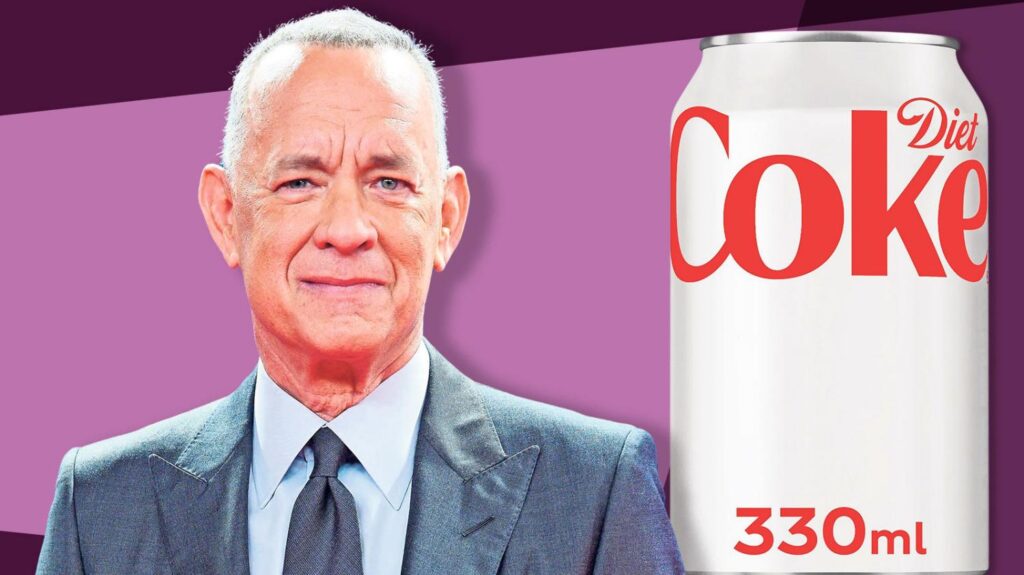
“I’m not a big drinker,” he told Buxton. “But of late I will have a Diet Coke with a shot of champagne. We call it a Diet Cokagne around the house.”
No wine for fast food – 6 May 2023
At the restaurant outside Gare du Nord, Paris these days, the habits have changed. No steak frites with a glass of wine. These days it is Popeyes from Louisiana, USA, serving fried chicken and coke.

A perfect illustration of why wine consumption in France has plummeted.
Fit for pseuds corner – QWine Review 3 May 2023.
Does this tasting note help you know what the wine reviewed actually tastes like?
“Littered with Campari, red licorice, pomegranate, red petals, a tease of blackcurrant and handfuls of red cherries sing. Red apples run riot ensuring the smash factor is high. The aromatic prettiness keeps the tempo upbeat.”
A fitting first entry into the Diary’s wine pseuds corner.* Future contributions welcome.
*Private Eyes Pseuds Corner described on Wikipedia: Listing pretentious, pseudo-intellectual quotations from the media. At various times different columnists have been frequent entrants, with varied reactions. In the 1970s, Pamela Vandyke Price, a Sunday Times wine columnist, wrote to the magazine complaining that “every time I describe a wine as anything other than red or white, dry or wet, I wind up in Pseud’s Corner“.
The way things were – From AAWE 26 April 2023
French wine poster (above) from 1934: “Le vin rend fort – buvons du vin” (wine makes you strong, lets drink wine)
Champagne’s Crushing Revenge On Miller High Life – Comité de Champagne 24 April 2023
Protected designation of origin : destruction of beer cans abusively bearing the designation champagne on Miller
On April 17, 2023, the Comité Champagne and the General Administration of Belgian Customs destroyed a shipment of 2,352 cans of American beer with the inscription “The Champagne of Beers”.
These products, destined for Germany, were intercepted in the port of Antwerp in early February. They represent an infringement of the protected designation of origin CHAMPAGNE.
Following this seizure by the Belgian customs, the Comité Champagne – the interprofessional body grouping the Champagne houses and growers, charged with the protection of the Champagne designation throughout the world – requested the destruction of these illicit goods. The consignee of the cans in Germany was informed and did not contest the decision.
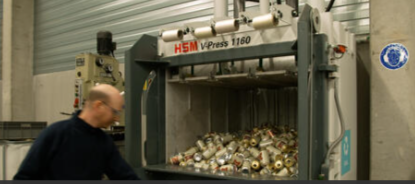
The destruction was carried out by Westlandia company in Ypres (Belgium) on April 17 with the utmost respect for environmental concerns by ensuring that the entire batch, both contents and container, was recycled in an environmentally responsible manner.
Initially, the Customs detention was carried out on the basis of European regulations, which stipulate that goods that infringe a protected designation of origin in the Member State where they are located are counterfeit goods.
Secondly, the Comité Champagne confirmed to Customs the illicit nature of the goods on the basis of the infringement of the designation of origin mentioned by European Regulation 1308/2013 of the European Parliament and of the Council of December 17, 2013 on the common organization of the markets for agricultural products.
Hey French: You Could Have Made This But You Didn’t – The Drinks Business 21 April 2023
Ten years after Pasqua Vigneti e Cantine embarked on its innovative multi-vintage white wine project, Hey French: You Could Have Made This But You Didn’t, the third edition has The Drinks Business asking if “it is time to reassess our devotion to single vintage wines.” Its reviewer commented that after tasting the single vintages that made up the first edition of Hey French individually – the goal being to assess the contribution each vintage was going to give to the final blend – I ended up with a very different idea – the result isn’t just the sum of the individual parts, but much greater.
Fountains Gushing With Young Wine – The Guardian 18 April 2023
We were born too late. “Excavation shows facility included luxurious dining rooms with views of fountains that gushed with wine … the story of the villa, whose origins lie in the second century AD, has just become even more remarkable, with the discovery of an elaborate winery unparalleled in the Roman world for lavishness.” See more at Sacrifice a Lamb Then Pick the Grapes
Memories of a Long Ago Tasting – Richard Farmer 10 April 2023
David Armstrong, my long ago editor at The Bulletin, after noticing my recent piece on Yellow Tail, tweeted me asking “Do you remember when we did the blind tasting of the 20 most popular wines? I think everyone balked at the fake champagne.” To my reply that his memory was better than mine David prompted me with: “A story for The Bulletin: to rank the wines people drank (top 20 by sales) rather than talked about. You organised Tony Bilson and Peter Lehmann as the official tasters. We got down to someone’s asti spumante. Peter took a sip, spat it out and said: What is this shit?!!!”
The National Library’s Trove (long may it continue to exist) at least provided me with this article by brother David back in a984:

No mention of the tasting but at least proof that David and I have long had an understanding that the wine industry is far more than the fine wines that afficiandos rave about.
The Ice Age and the Evolution of Wine – from Haaretz 9 April 2023
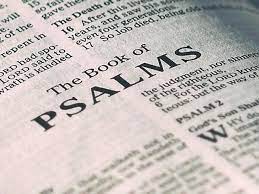
Answers to some interesting questions: Why did science get so confused over the origin of the grape? Did we really grow and nurture vines before anything else, and why do we drink toxic beverages anyway?…
“Wine has become so ingrained in culture that consumption of four glasses of the stuff has become de rigueur on Passover, but we can’t all tolerate alcohol equally. Why would a substance that makes us sick be so cherished?
A shrew, a fruit bat and a rabbi walk into a bar –
“And they have cast lots for my people; and have given a boy for an harlot, and sold a girl for wine, and have drunk” – Joel 4:3
Nasty stuff, wine. Why was it invented anyway? Alcohol is repulsive.
The answer seems to be that mammals like having their minds altered. Many indulge in fermenting fruit to the point of staggering inebriation, including elephants who turn out to have very low tolerance for alcohol. Captive macaques will get stinking drunk if given the chance. Birds will get so smashed on fermenting berries they fall out of the sky and herbivores in general, including the moose, can’t handle their liquor.”
Chile uproots 4.5% of its vineyards 7 April 2023
Chile’s national Agricultural and Livestock Service reports , commentedland under vine is down by just over 6,080 hectares, a 4.5% decline from 2020 to 2021. Eduardo Jordan, head winemaker for Fairtrade-producer Miguel Torres Chile, commented that “the problem is that the small producers are often getting paid a price which isn’t even moral… paying 85 pesos a kilo [16 Australian cents per kilo] is abuse!”
The Game Over for the Wine Game? – The Wine Economist
The story of the fall and rise of board games is interesting if we think about it in terms of similar patterns in the wine industry. Board games (and wine) suffered four big blows in recent years. First came in the form of demographic and socio-economic change. Generations shifted — the players got both older (aging Boomers) and younger (Gen X, Gen Z), too. The faces around the table were different and the opportunities to gather together were different…
The situation for board games looked particularly bad because, if you’ve followed the story so far, you can see that a whole generation has grown up in a different game environment than before. It was hard to believe that board games could ever stage a come back. Game over for them. But they did it! Board games are back! How?
A recent Washington Post article by Jacvlyn Peiser suggests that the board game renaissance is a combination of old and new. … But it’s the classic appeal that is the foundation of the innovative surge. The Washington Post article concludes with a comment that board games endure because they get friends and family together to share experiences and make memories. What could be better?
Well, of course, board games are better with wine (for those of legal drinking age). Wine and social gatherings are perfect parings. There are even board games for wine enthusiasts. Did you know that there is now a special Napa Valley Monopoly edition? …
It seems to me that the wine industry, following the board game analogy, needs to continue to innovate, to reach out to consumers with different interests and lower specific levels of commitment than before. But in doing that, it is important not to forget the values and virtues that have made wine an enduring part of life.
It is reported that Bernard Arnault, the head of LVMH and the current holder of the “World’s Richest Man” title, once met with Steve Jobs, the visionary creator of the Apple electronics phenomenon. Do you think people will still be buying your iPhones in 30 years, Arnault asked Jobs. Don’t know, Jobs said honestly.
Do you think people will will still drink your Dom Perignon Champagne in 30 years, Jobs asked in reply? Yes, Arnault said confidently. The wine will endure. There will be Dom Perignon for generations. Jobs agreed. So do I.
This is not an April Fool’s Day Joke – from The Times 1 April 2023
As waning tradition sends vineyards to the wall, breweries are cashing in by pairing their bottles with blue cheese and crème brûlée… The enthusiasm is widespread, with research published this week suggesting that beer is replacing wine in the hearts and glasses of a growing number of French people. The survey by Circana, the market researchers, noted a “historic shift”, with beer on the point of outselling wine in supermarkets. “We forecast that in 2023, revenue from beer will overtake that of still wine for the first time,” Circana said.
When wines move into the investment column 31 March 2023
Replying to @richardlfarmer on Twitter to A New Peak of Australian Wine Madness
When wines move out of the drinking area, into the “investment” column time to walk away. A bit like diamonds though, what they are “valued” at doesn’t bear any resemblance to what you can sell them for. How much Grange or Hill of G is actually drunk, vs onsold over and over?
My guess in anwer is “probably less and less is actually drunk as the price gets higher and higher.”
A little bit of fun and nonsense: what’s your vinotype? Richard Farmer 30 March 2023
Master of Wine Tim Hanni developed a test of personality traits and food preferences to determine how different wines taste to different people or, in his language, your vinotype. Being a sucker for an internet survey I gave it a go and found I am “smack-dab in the center of the sensory sensitivity spectrum”. Flexible, adaptable, adventurous and a champion of ‘context’ for finding just the ‘right’ wine, with wine preferences running a gamut from delicate to full-bodied, dry white wines to a wide range of reds, especially favoring those that are very rich, smooth but not too oaky or tannic. A bit of fun and nonsense but that verdict is one I’m prepared to accept.
Where’s our Libby? – Richard Farmer 22 March 2023
The United States wine industry is suffering, like most of those around the world, from a significant drop in consumption by young drinkers. The decline is more than just a turn against all alcohol but largely a switch towards spirits with fruit flavours and bubbles. Grant Hemingway, co-founder of the low- alcohol wine brand Libby summed up the problem this way: “We in the wine industry just sat idle and watched hard seltzer eat our lunch.”
Hemingway is doing something about it and his Libby brand of bubbles (not, please note, sparkling) is one of many leading a fightback with a reduced alcohol product.
Another Embarrassment – Australia trounced by New Zealand – 20 March 2023
No. It’s not just in the Bledisloe Cup.
The New Zealand government estimates annual wine exports will reach just over NZD2.4bn by June 2023. With Australian exports static or declining, the 2021-2022 end June figure was $2.08bn, and allowing for a 10% difference in exchange rates, means New Zealand has likely passed Australia.

The 42,000 hectares of New Zealand vines beats the 146,000 hectares of Australian vines.
Australian exports have not moved since 2008 and there is no point blaming China which came and went quickly.
Something is terribly wrong. Is anyone in charge down at Wine Australia?
Footnote: We are doing out best to stop the NZ flow with the Borderland Estate ‘Flocking Galloots’ South Australia Sauvignon Blanc 2022. Good acid fruit balance, soft, a delight to drink with no back palate phenolics from the skins or pips and comes in at an agreeable 10.5% alc/vol. Perfect to drink at any time.
Let them keep their Marlborough. The Flocking Galootts is a steal at just $8.60 a bottle.
King Charles III is Off to Bordeaux – 20 March 2023
Not really a surprise that Charles III has chosen to visit Bordeaux during his first royal tour. As The Times says in an editorial “arguably, if it hadn’t been for the acute thirst of the Plantagenets and their successors, the Margaux, Médocs, Saint-Émilions, Latours and Mouton Rothschilds that have dominated royal banquets for the past 500 years (including the Petrus served at the late Queen’s wedding) might never have arrived in such quantities. Eleanor of Aquitaine brought Henry II an inestimable dowry.”
Nor a surprise that the Chateau chosen for this latest royal patronage is Smith Haut Lafitte. The vineyard with its horse-drawn ploughs, llama grass-cutters, organic compost, carbon dioxide recycling and flirtation with a version of biodynamics should appeal to a monarch oft described as “the green king”.
Perhaps he should be sent a copy of the paper mentioned in the item below lest he makes a complete fool of himself with some kind of complete endorsement of this eccentric Chateau.
Fruit days and root days 19 March 2023 – Richard Farmer
A wonderful scientific refutation of the nonsense of biodynamics was referred to me by a reader of my Twitter account. Expectation or Sensorial Reality? An Empirical Investigation of the Biodynamic Calendar for Wine Drinkers published back in January 2017 is far more interesting than that academic title might suggest.

What a group of New Zealand academics published demolishes a claim of biodynamics believers that fruit days as determined by the lunar calendar are better for tasting wine than root days. The research project concluded that “there is no evidence in support of the notion that how a wine tastes is associated with the lunar cycle”.
Global warming helps – 17 March 2023

The price of Beaujolais is on the rise and producers say global warming has helped their move upmarket, with their gamay grape variety benefiting from hotter conditions. Philippe Bardet, the deputy chairman of Inter Beaujolais, the local winemakers’ federation, told Le Parisien: “The grapes are riper thanks to the sun and give red wines that are fleshier, tempting [and] silky with rounder and more mature tannins. You can say that global warming has done us a lot of good.”
We could not agree more! – 16 March 2023 Eric Asimov in The New York Times
My favorite wine producers look inward, not outward. They ask themselves, “How can I do my utmost to convey the character of this particular patch of earth?” And they often conclude: “I’m going to make the wines that I like to drink. If nobody buys them, I’ll drink them myself.” …
You’d be right to think that this doesn’t make much business sense. Successful corporations rely on focus groups and surveys to determine what the public likes and loathes. Their products fit their perception of what will sell, which in the world of wine often results in imitation rather than originality. …
These sorts of wines can, nonetheless, be delicious. Plenty of people will love them and find them satisfying. But a delicious wine is not necessarily the same thing as an original wine. Original wines that are delicious, too, are best of all.
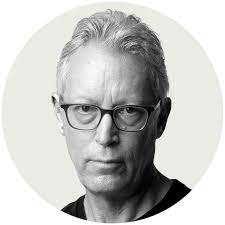
The most distinctive wines tend to be made by small, family-run producers. They do need to sustain their businesses, but they do not answer to outside forces motivated primarily by sales and profits, or to critics’ notions of what is proper and desirable. They are free to define their own aesthetic standards.
Let yourself go a little – 15 March 2023 – from The Times diary
While researching her book 101 Wines to Try Before You Die, the grape enthusiast Margaret Rand interviewed an American appeal court judge and asked what prisoners on death row requested for their last meal. “He said it was invariably pizza or a Big Mac and fries,” she says, “and most insist on having a Diet Coke. I’d have thought at that stage you could let yourself go a little.”
No biodynamic research at the AWRI – 14 March 2023
Pleased to report that the Australian Wine Research Institute replied to a query by me this morning that it had not conducted any research into biodynamics in vineyards. Perhaps the Institute should explain to Wine Australia that real scientists do not go in for the nonsense featured on its website.
Spare a thought for these winemakers 13 March 2023 from Al Jazeera
Since Russia invaded Ukraine, the traditional wine-making regions in the south and east of the country have found themselves on the front lines, with many wineries, such as Château Kurin near Kherson, a port city in southern Ukraine, falling into Russian hands. Others have been damaged by missile attacks, such as the Cassia family winery near Kyiv. The country’s largest bottle producer, Vetropack Gostomel in Kyiv, was also heavily damaged in February 2022. However, despite the dangers of war, many winemakers have continued to operate, ensuring that the nascent Ukrainian wine industry, buoyed by growing demand, has continued to flourish. Wine lovers, in turn, spurred on by patriotism and sommeliers’ recommendations, are ditching foreign wines and opting for local producers.
The art of blending – 10 March 2023 Fiona Beckett in The Guardian
‘A winemaker can combine different components to make a harmonious whole. And if it’s a bad year for one variety, say, you can simply bump up another.’
Port in a Storm – 7 March 2023 From Patrick Kidd in The Times diary
Having failed, as ever, to give up anything for Lent, I admire those with discipline. So does the drinks writer Henry Jeffreys, who tells The Moon Under Water that a role model is William Wilberforce, who, after a religious moment, set out to abolish more than slavery. “He decided he had to leave behind his dissolute life and stop gambling and drinking,” Jeffreys says. “So he cut down to only six glasses of port a day.”
Winestate Magazine Comes to an End – 5 March 2023

The end of an era of writing about the Australian wine industry comes with the final edition of Winestate magazine being on the news stands this month. As the editor said in a final note to readers: “Since 1978 Winestate has become somewhat of a wine institution, catering to both trade and consumer alike. We greatly enjoyed being a wine buying guide, collaborating with winemaker judges around Australia and New Zealand. We learnt a lot and we like to think that we gave a lot in return, giving winemakers an overview of the wines made by themselves and their peers.”
Attracting younger drinkers to wine – 5 March 2023
Several learned wine industry reports recently on the lack of attempts to stop the decline drinking by younger people. At least Treasury Wine Estates makes an attempt with its 19 Crimes brand promoted quite successfully by Snoop Dogg. The man himself dropped into Treasury’s Melbourne headquarters to meet his paymasters.
Will wine be next? 25 February 2023
A German brewery has developed what it claims to be the world’s first powdered beer. Stefan Fritsche, the brewery’s managing director, said Neuzeller’s “dryest beer”, differs from other powdered beers brought to market in recent years in that it contains alcohol and is carbonated.

“Add water and you’ll get a beer with the complete beer taste including alcohol and carbon dioxide and a head of foam. In principle we can produce any beer in the world using the method — dark beer, light beer, India pale ale, whatever.”
The evolution of the French view of wine – 23 February 2023 Marie Mascré, Founder of “Sowine”
The French wine marketing consultant describes it thus: There has been a fairly constant decrease in wine consumption since the 1960s. We have gone from 130L consumed per inhabitant in 1960 , to 55L in 2000 and 36L in 2018. So we really decreased . The fall is explained by the evolution of our view of wine: “Until the 1960s, wine was a food product. Today, it is a pleasure product.”
Some London Competition Winners – 20 February 2023
Having noted elsewhere the success of Shiraz from Penfolds at the Global Shiraz Masters in London I thought it appropriate to note these other Barossa wines that achieved the highest gong of being designated Master shiraz.
Château Tanunda 100 Year Old Vines Shiraz 2019
Gatt Wines Gatt Old Vine Shiraz 2016
Gatt Wines Gatt Shiraz 2016
Langmeil Winery Hallowed Ground Shiraz 2019
Hare’s Chase Marananga Shiraz 2019
That Time Magazine Dozen – David Farmer 19 February 2023
I have finally found details of that Time magazine article saying that a Tyrells Pinot was one of the world’s best wines. (See the Glug story here.)
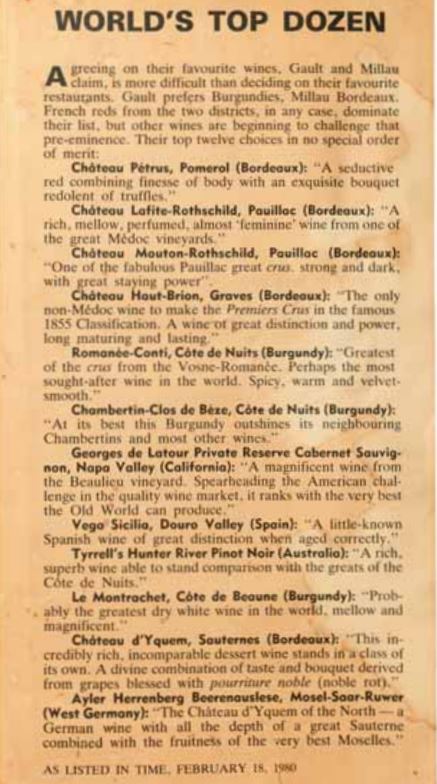
That question of temperature – A Twitter from a reader – 19 February 2023
1976 was actually the coolest year in the Hunter Valley for the last 70 years. We might be waiting a while for the next decent drop. pic.twitter.com/FintPEwN0G
— Brenton (@brenton222) February 18, 2023
A good question – Richard Farmer 18 February 2023
A customer from long ago when I started selling wine in Canberra asked a very good question in a comment on our piece about cool climate wines.
Hi Richard I’m very familiar with that wine. It was exciting for its time. Ask James why he moved from the Hunter to the Yarra.
— Lester Jesberg (@LesterJez) February 18, 2023
I suspect that Lester has a very good idea what the answer would be. He is a dedicated and long practising taster of, and writer about, wine. His Wine Wise magazine gives an interesting perspective on all things vinous.
A literal type of fellow – Richard Farmer 17 February 2023
It’s probably the grounding I received as a young journalist at Tasmanian Truth. I tend to use words in the same sense as the dictionary. Hence a teetotaller to me is “one who practices or advocates teetotalism” with teetolalism being “the principle or practice of complete abstinence from alcoholic drinks.” I detect nothing derogatory in that definition but many followers of my Twitter and Facebook accounts clearly have.
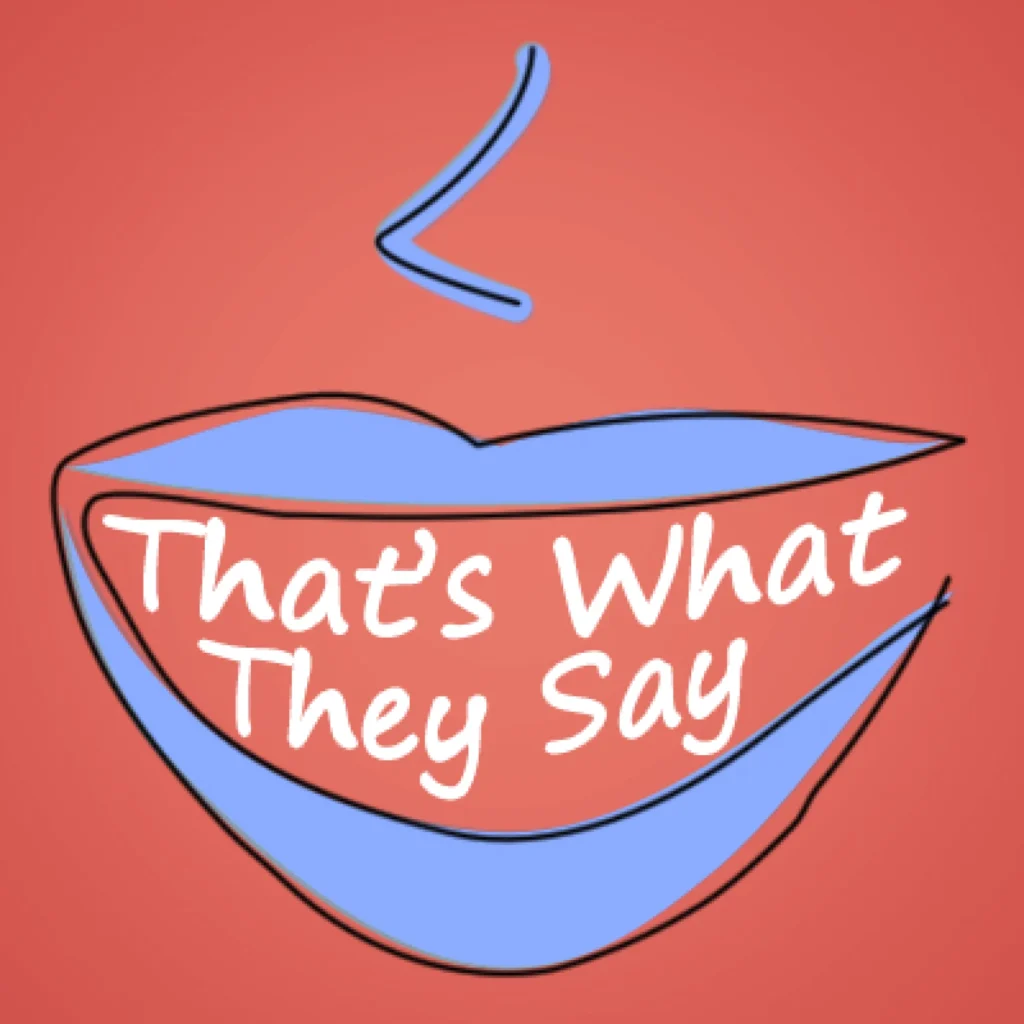
So I determined as an act of self defence that further examination into this T-total business was needed. Merriam Webster says the word has nothing to do with tea the drink. More likely the “tee” that begins the word teetotal is a reduplication of the letter “t” that begins total, emphasizing that one has pledged total abstinence. In the early 1800s, tee-total and tee-totally were used to intensify total and totally, much the way we now might say, “I’m tired with a capital T.” “I am now … wholly, solely, and teetotally absorbed in Wayne’s business,” wrote the folklorist Parson Weems in an 1807 letter. Teetotal and teetotaler first appeared with their current meanings in 1834, eight years after the formation of the American Temperance Society.
An item on the BBC World Service agreed about that origin. It continued:
“To understand the connection to alcohol, we have to go back to 1830s Britain, when the Total Abstinence Society formed. The members of this group had chosen not to drink alcohol. The Oxford English Dictionary cites the first use of “teetotaler” in 1833, not long after the society was established. A man named Richard “Dicky” Turner gets credit for the first use.
In fact, “teetotaler” came to be known as “Dicky Turner’s word.” In 1833, he gave a speech advocating total abstinence from all alcohol, as opposed to abstinence only to “ardent spirits” such as brandy or whiskey. That is, teetotal abstinence.
Even Turner’s tombstone credits him with first use of the term in this manner. It says, “Beneath this stone are deposited the remains of Richard Turner, author of the word ‘teetotal’ as applied to abstinence from all intoxicating liquors.”
Did you notice how the inscription specifies how Turner used “teetotal”? Evidence suggests that “teetotally” was a slangy expression before Turner used it. He just applied it in the context of alcohol.
We’d like to see “teetotally” make a comeback. Maybe #teetotally could become a thing? Let us know if you’ve got better ideas.“
I rest my case.
Does the % alcohol content on a wine label really mean anything? – Richard Farmer 17 February 2023
The label says 14.3% Alc./Vol. It looks precise and definite but it isn’t. The truth for an Australian wine is that the actual alcohol by volume measure could be as low as 12.8% or as high as 18.8%.
What is on the label is often times misleading. In this day and age where some consumers think that lower alcohol means better there is a temptation for a wine company to err on the lower side when deciding what figure to use.
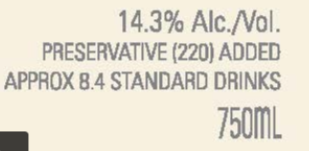
There’s nothing illegal about that. Wine Australia, which administers labeling laws, says the alcohol content statement must be accurate to within 1.5% alc/vol for wine, sparkling wine and wine products containing more than 6.5% alc/vol.
Preparing for a New Goat Square – Brad Rohrlach 13 February 2023
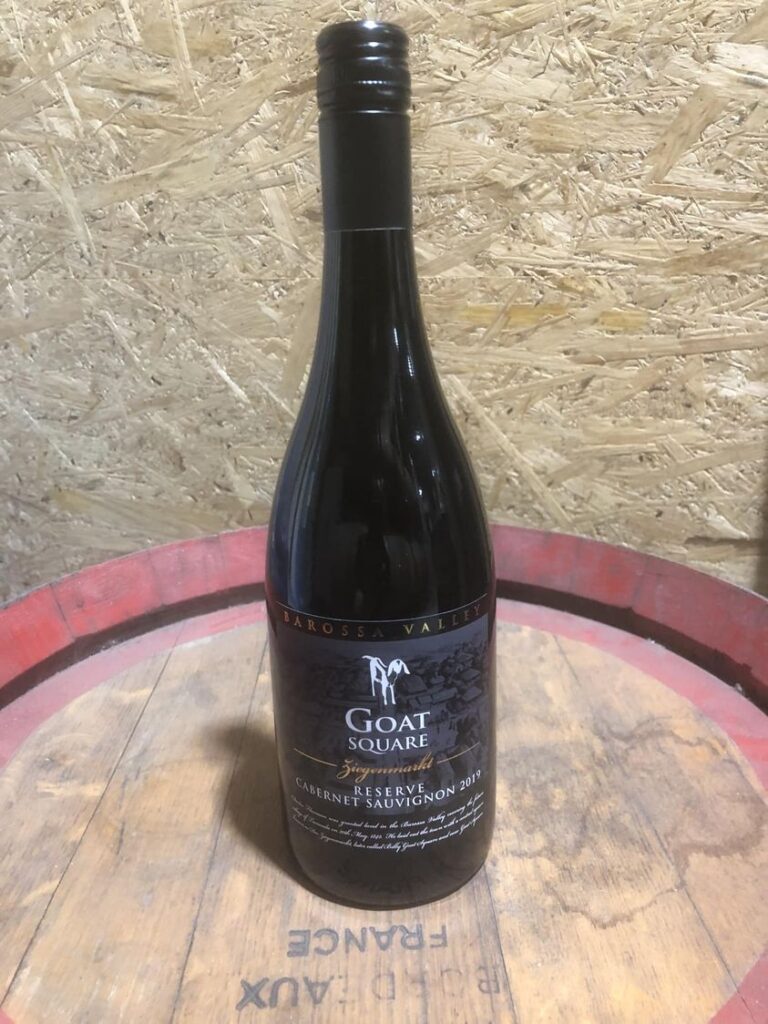
Look out for this wine in the coming days. An old favourite now made for the Cabernet lovers out there.
We are getting it ready for release in the vineyard now.
Goat Square is our homage to the origins of the Barossa Valley.
The Square still has some of the original cottages that surrounded the initial meeting and marketing place outside the then village of Tanunda.
We call it our flagship brand.
The first Goat Square release was a 2003 Shiraz. Cabernet Sauvignon followed with the 2004 vintage
There’s a full list of all the Goat Square releases HERE.
Restaurant Wine Prices – David Farmer 15 February 2023
John Lethlean writes about restaurant food for The Australian, and a few days back listed his seven big gripes. Number six focussed on wine ‘… Spending ridiculous amounts on readily available, highly marked-up wines with virtually no value-adding in terms of cellaring, presentation and stemware’.
So have we returned to the main complaint of the 1990s. Why are restaurant wines overpriced? To avoid comparison restaurants stock obscure boutiques so what is the standard price. It seems there is nothing we diner can do, together we are trapped.
The maximum wine price that represents value for money– from reader Gene Whiting, 14 February 2023
This is a tough question. Prices are so arbitrary relative to wine quality. Most wine I buy is below $20.00. There are many very good drops, and occasionally one stumbles on an excellent white below $10.00. On the other hand, truly superb drops generally cost more than $25.00, but my peasant up-bringing balks. And there are many very ordinary wines above $30.00. The risk/reward equation above $20.00 is not good. Anyone who spends $1,000 on a bottle of Grange is a fool.
A 2023 Vintage Update – by Brad Rohrlach 13 February 2023
Well, it’s that time of the year again with vintage nearly upon us, and things are slowly taking shape in the Barossa Valley Vineyards. It’s been a long cool summer so far, meaning ripening is slow with most saying we are 4 weeks behind normal picking times.
Currently, Shiraz, Cabernet and other red varieties are going through Veraison, which is the process of the colouring of the grape.
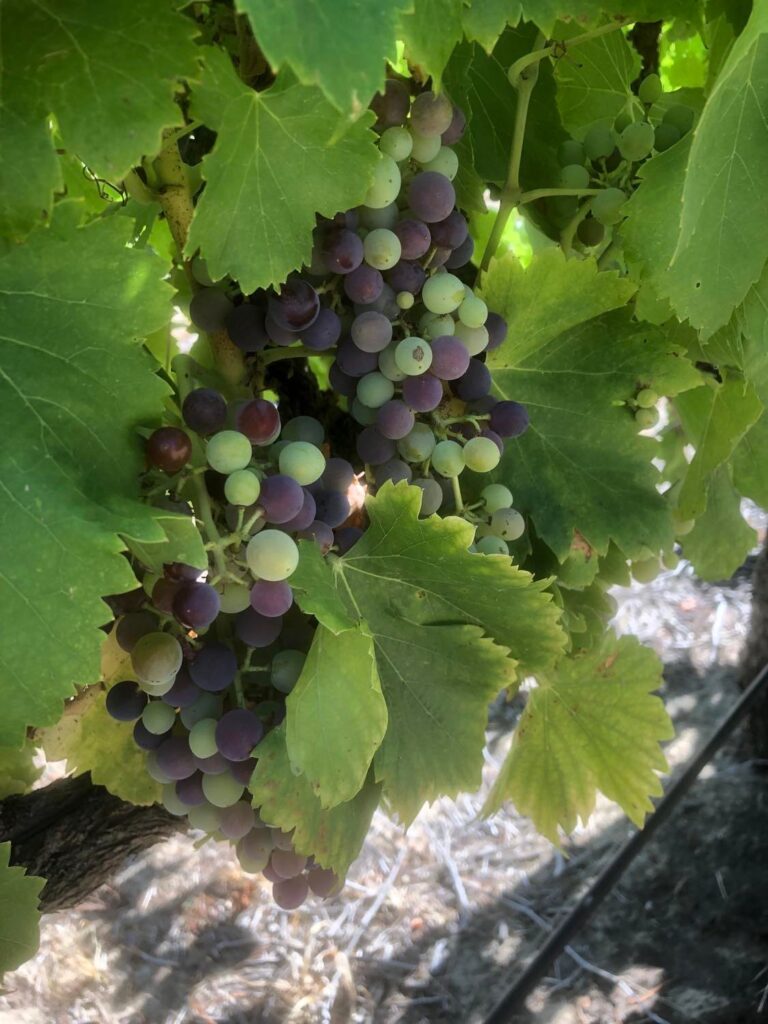
Growers have had their hands full too with the damp conditions, with a constant requirement of spraying to reduce the chances of disease growing in the vines.
Having said that, most are saying the quality will be there again this year, as always with the Barossa Valley Vineyards.
A thank you to Hugh Johnson – by David Farmer 12 February 2023
What do you need to know about wine? Beneath the big picture sits wine with the other interests to living well. Bread and wine became food and wine which both have the characteristic that the pleasure grows as you know more.
Writers appeared as guides. Now another problem rises as who are these teacher? This is a pet gripe of mine as many writing about wine do so because they can. Getting qualifications like a Master of Wine or a Master Sommelier is a start yet what I want is a writer with vast, worldly experience. Most do not have this.
A story will help. I read ‘Wine’ Hugh Johnson (1966) shortly after it was published. A trip to Spain-France in 1967 started the exploration of wine. Being well paid I could try the special wines I read about, and my interest grew. Wine seemed to be about places which made the best wines. A 1969 trip to France was when the insight really dropped. Wine was also about a quality to price ratio.
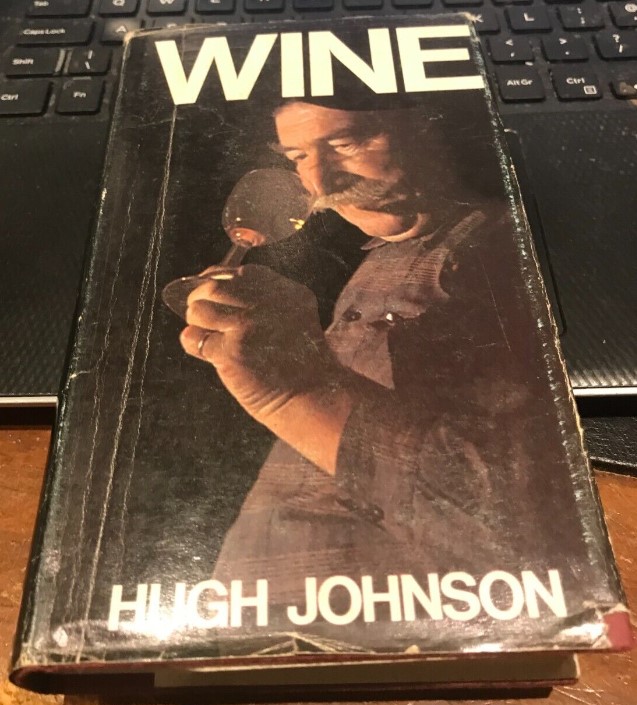
The very best wines, the famous names on the wine lists, were only a few times dearer than the good and honest.
So, this is what wine is about, read a bit, remember the names, then buy the best.
The wines I had thought were reserved for the wealthy could be purchased by the middle class.
At this time the smart crowd noted that Christies (London) auction prices had moved higher than French restaurant prices. So the 1970s into the early 1980s was the time of plunder.
I was there, sorry you missed out, yet the insight remains, what you ask your wine writer to tell you has not altered. What is the best way to spend your money.

